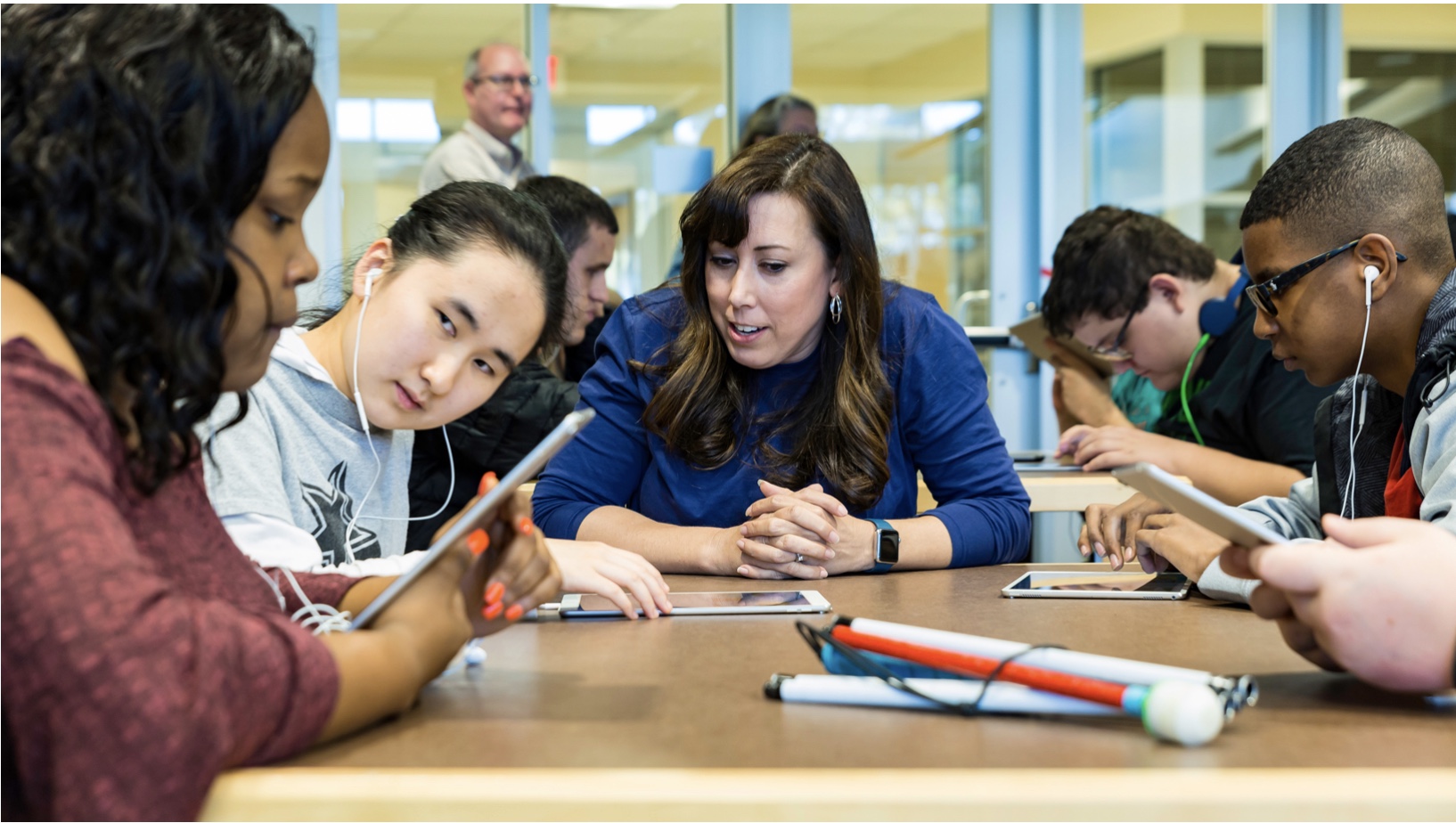Apple is teaming up with educators for blind and deaf communities across the U.S. to bring accessible coding to their schools. Beginning this fall, schools supporting students with vision, hearing or other assistive needs will start teaching the Everyone Can Code curricula for Swift, Apple’s programming language.
Apple created the Everyone Can Code curricula so students from kindergarten to college and beyond can learn and write code using Swift. With teacher guides and lessons, students learn the basics on iPad with Swift Playgrounds, which lets you use real code to solve puzzles and control characters with just a tap, to App Development with Swift to help aspiring app developers build their first iOS apps.
“Apple’s mission is to make products as accessible as possible,” said CEO Tim Cook in a press announcement. “We created Everyone Can Code because we believe all students deserve an opportunity to learn the language of technology. We hope to bring Everyone Can Code to even more schools around the world serving students with disabilities.”
The schools will tailor lessons using Apple’s accessibility technology. The company collaborated with engineers, educators, and programmers from various accessibility communities to make Everyone Can Code as accessible as possible and will work in close coordination with schools to augment the curricula as needed. This will include providing additional tools and resources such as tactile maps to enhance the understanding of coding environments for non-visual learners.
“Our students were tremendously excited at our first Everyone Can Code session earlier this year,” said Bill Daugherty, superintendent at the Texas School for the Blind and Visually Impaired in Austin. “There are more than 10,400 students with visual impairments in Texas, and the development of this curricula is going to be a big step in opening up coding opportunities for our students and those across the nation.”
California School for the Deaf superintendent Clark Brooke said, “We’re thrilled to kick off the partnership with Apple. This program is a great way to bring to life the ideas and imagination of our Deaf students through coding, while also building a foundation for future careers in software development and technology.”
Julie Tye, president and CEO of the Hadley Institute for the Blind and Visually Impaired added, “As the largest educator within the visually impaired community, Hadley knows firsthand how important Apple’s technology is in making daily living easier and more enjoyable. Now, partnering with Apple, we are excited to help even more people learn how to code. Whether for fun or future employment, learning the language of technology can offer tremendous opportunity to everyone.”
The Everyone Can Code curricula is compatible with VoiceOver, the most advanced screen-reading technology for people who are blind or low vision. VoiceOver is a gesture-based screen reader that describes nearly everything happening on your screen, and is the most popular screen-reading technology of any mobile technology platform1. With VoiceOver integration, Swift Playgrounds can take students step-by-step through learning Swift, all without needing to see the screen.
Accessibility features for people who are deaf or hard of hearing include FaceTime for capturing every gesture and facial expression, Type to Siri, closed captions, LED Flash for Alerts, Mono Audio and Made for iPhone hearing aids.
iPad and Everyone Can Code can also be used by students with physical motor limitations through Apple’s built in Switch Control, which enables switches, joysticks and other adaptive devices to control what is on your screen.
In the photo (courtesy of Apple) students from the Texas School for the Blind and Visually Impaired take part in a Swift Playgrounds session.

